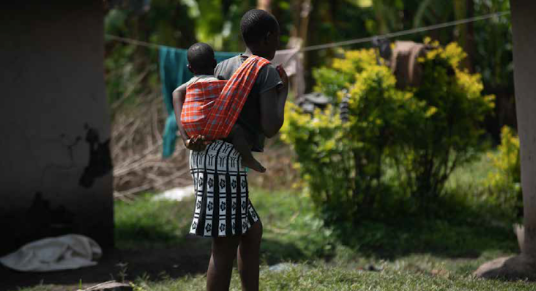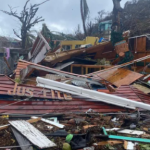On December 25, 2023, Lucy was defiled after attending a kesha to welcome Christmas Day. The 17-year-old, who requested to be identified by only one name, worked as a housemaid in Nakuru.
Lucy’s employer had allowed her to attend the overnight celebrations at a church with friends, including her 30-year-old boyfriend, a movie vendor.
“I did not say yes, but I could not resist,” she says of the life changing sexual encounter at dawn.
The law does not envisage minors consenting to sex.
Now in her seventh month of pregnancy, Lucy also tested HIV positive during her first antenatal care visit.
That, unfortunately, made her a perfect example of the worrying situation that the National Syndemic Diseases Control Council is fighting to end – the Triple Threat.
This refers to teenage pregnancy, adolescent HIV infections and sexual and gender-based violence.
For example in 2023, the year Lucy was raped, 20,143 SGBV cases were reported.
“Among the survivors, 1,934 became pregnant four weeks after exposure and 183 had acquired HIV three months after the sexual exposure,” the NSDCC said.
The Council is now implementing ‘A Commitment Plan to End the Triple Threat’ of new HIV infections, mistimed pregnancies and SGBV cases among adolescents and young people, by 2030.
Dr Ruth Laibon-Masha, Chief Executive Officer at the NSDCC, said these three threats must be ended, not just reduced.
“The message is clear, it is not about reduction. We must completely stop and eradicate triple threat.”
The Commitment Plan, which was launched earlier this year, is implemented in collaboration other government institutions, NGOs and United Nations agencies – what is called a “whole of nation” approach.
The approach prioritizes prevention, early intervention, rehabilitation, socioeconomic empowerment, community engagement, collaboration, and advocacy for policy reforms to effectively address the challenges facing adolescents and young people.
A steering committee composed of PSs and the CEO of the Council of Governors will oversee its implementation, supported by a technical multi-sectoral working group and coordinated by NSDCC and the National Council for Population and Development.
The commitment is being actualized through four priority areas:
1. Fast-tracking the end of new HIV infections and AIDS among adolescents and young people.
2. Accelerating progress to reduce adolescent pregnancies.
3. Eliminating sexual and gender-based violence.
4. Addressing key factors that exacerbate risks and vulnerabilities to the Triple Threat.
Under the fourth area, partners have committed to help delay sexual debut, defined as first sexual intercourse at or before age 15 and forced sexual initiation.
“The successful implementation of this Commitment Plan should result in the de-stigmatisation of the subjects of coerced and unprotected sex; allowing communities and families to meaningfully engage adolescents from early age with the full spectrum of preventive, promotive and curative health services,” Masha said.
The prevalence of child motherhood poses a significant setback in societal progress.
In 2023, for example, Kenyan health facilities attended to 254,753 pregnant girls aged 10-19.
Partners will also promote universal access to Human Papilloma Virus Vaccination for girls aged 10-14 and promote menstrual health.
They will also advocate for scale up of evidence-based prevention and education for drug, alcohol and other substance abuse disorders and mental wellness.
Efforts will include focus on education, by promoting transition from primary to secondary school.
“Being in school can protect and prevent HIV by reducing early marriage and risky sexual partnerships thus reducing the risk of acquiring HIV by two thirds (66 per cent),” the partners said.
They also committed to reinforce the implementation of school reentry for adolescent mothers and the transition of young people from schooling to work.
Health CS Susan Nakhumicha said the pledge to eliminate sexual and gender-based violence must be achieved by 2026.



